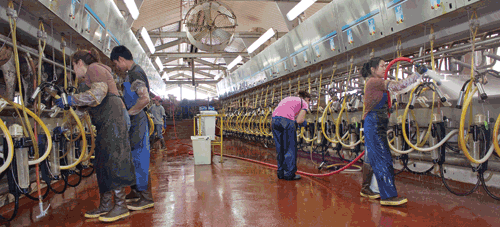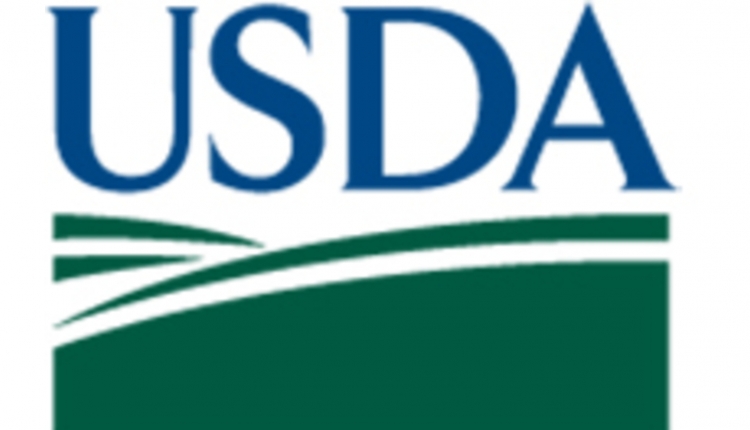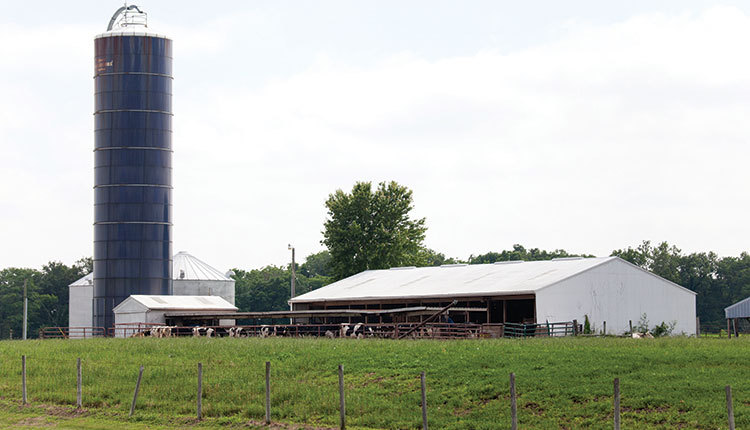The author is a dairy nutrition consultant for Central Connecticut Cooperative Farmers, who previously managed large dairies in California and Hawaii.

More milk won't equal more money if a producer only focuses on efficiencies in one area. A comprehensive approach is a must to stay in the black.
With the help of higher milk prices in 2011, many U.S. dairy farms ended the year in the black even though feed and other costs of production continued to climb. The milk price for 2011 in the Northeast averaged $21.53 per hundredweight (cwt.) - up nearly $4 from 2010 and up almost $8 from the train wreck of 2009. For many dairies, profitability in 2011 enabled them to bring their balance sheet close to where it had been prior to 2009.
The Northeast Dairy Farm Summary for 2011, compiled by the Northeast Farm Credit Association, does a superb job of describing various dairy management styles. Over 500 dairy farms from New York, New Jersey and the New England region participated in this annual survey. These operations averaged just shy of $800 profit per cow for the year. The average herd size for this group was 326 cows, while milk sold per cow was 23,244 pounds.

More milk, more money?
In Table 1 above, the management styles of the top 25 percent of the most profitable dairies in the survey - 133 farms - concludes that reaching for the 24,000-pound-plus mark for milk production doesn't always mean you'll make more money. The table shows that herds classified as "tight with a buck" and averaging just over 21,000 pounds of milk made the most money per cow for the year - almost $100 per cow more than the herds producing over 24,000 pounds.
However, across the entire survey those dairies with the largest herd sizes, 300 cows or more, continue to be the most profitable with net earnings per cow being several hundred dollars higher than dairies with smaller herds. Also, Table 2 below shows that dairies with fewer than 89 cows made more money than dairies milking 90 to 149 cows suggesting that somewhere in that herd-size range some efficiencies are lost. The summary does note, too, that simply being a larger dairy doesn't guarantee profitability since there were 37 dairies in the 300-plus range that ended the year with below-average profitability.

Management styles in the U.S. dairy industry are so varied that one dairy farm can make $500 per cow per year producing 15,000 pounds of milk per cow, while another dairy farm will lose $500 per cow per year producing over 20,000 pounds of milk per cow. The amount of milk produced per cow annually accounts for only 22 percent of the profitability of a dairy farm. Net cost of production has a more predictable impact on dairy profitability. In the survey, a high percentage of dairy farms with a cost of production above $20 per hundredweight were losing money.
To stay ahead of the game, dairy farmers in the Northeast survey milk 50 more cows than they did five years ago. As a result, they now have more invested in the business with total assets up nearly $1 million in the past five years. At the same time, their total liabilities have risen by about a quarter of a million dollars. It costs $400 a year more to feed milk cows today than it did five years ago. Dairy farming is an expensive and risky business to be in, with average debt per cow in the Northeast above $3,000 per cow.
Cost of production services debt
It's critical that there be adequate cash flow to service both short-term and long-term debt. Cash flow is highly dependent upon cost of production. In the 2011 survey, the cost of production varied from a low of $15.91 per cwt. for the top profit quartile all the way up to $22.53 per cwt. for the bottom profit quartile. That $6 makes a big difference as to whether a dairy farmer can stay current with the bills.
Of course, the milk price is a significant factor as to whether the dairy industry has a good year or a not-so-good year. In actual dollars adjusted for inflation, however, the record-high milk price of $21.53 per cwt. ranks 14th based on economic data over the past 30-plus years. In other words, milk prices must climb significantly higher than last year's record to compensate for the steadily rising costs of production and the continuing high levels of investment necessary to maintain economies of scale.
The chronic overproduction of dairy products and cycles of boom and bust continue to force dairy farmers to manage their way out of financial jams. Every dairy farmer must develop a management style that results in the optimal efficiencies of all the resources available which includes financial capital, debt capacity, as well as land base and labor availability.
Dairy farm profitability has more to do with successful management of all aspects of the business than any one single factor. Dairies that focus on maximizing feeding efficiencies and the amount of milk produced per worker with a focus on pounds of components shipped while keeping debt under control will reap the rewards when prices are in their favor. They also have a much better chance of keeping their financial ship afloat in years when those dismal milk prices return than producers who only focus on one of these areas.

With the help of higher milk prices in 2011, many U.S. dairy farms ended the year in the black even though feed and other costs of production continued to climb. The milk price for 2011 in the Northeast averaged $21.53 per hundredweight (cwt.) - up nearly $4 from 2010 and up almost $8 from the train wreck of 2009. For many dairies, profitability in 2011 enabled them to bring their balance sheet close to where it had been prior to 2009.
The Northeast Dairy Farm Summary for 2011, compiled by the Northeast Farm Credit Association, does a superb job of describing various dairy management styles. Over 500 dairy farms from New York, New Jersey and the New England region participated in this annual survey. These operations averaged just shy of $800 profit per cow for the year. The average herd size for this group was 326 cows, while milk sold per cow was 23,244 pounds.

More milk, more money?
In Table 1 above, the management styles of the top 25 percent of the most profitable dairies in the survey - 133 farms - concludes that reaching for the 24,000-pound-plus mark for milk production doesn't always mean you'll make more money. The table shows that herds classified as "tight with a buck" and averaging just over 21,000 pounds of milk made the most money per cow for the year - almost $100 per cow more than the herds producing over 24,000 pounds.
However, across the entire survey those dairies with the largest herd sizes, 300 cows or more, continue to be the most profitable with net earnings per cow being several hundred dollars higher than dairies with smaller herds. Also, Table 2 below shows that dairies with fewer than 89 cows made more money than dairies milking 90 to 149 cows suggesting that somewhere in that herd-size range some efficiencies are lost. The summary does note, too, that simply being a larger dairy doesn't guarantee profitability since there were 37 dairies in the 300-plus range that ended the year with below-average profitability.

Management styles in the U.S. dairy industry are so varied that one dairy farm can make $500 per cow per year producing 15,000 pounds of milk per cow, while another dairy farm will lose $500 per cow per year producing over 20,000 pounds of milk per cow. The amount of milk produced per cow annually accounts for only 22 percent of the profitability of a dairy farm. Net cost of production has a more predictable impact on dairy profitability. In the survey, a high percentage of dairy farms with a cost of production above $20 per hundredweight were losing money.
To stay ahead of the game, dairy farmers in the Northeast survey milk 50 more cows than they did five years ago. As a result, they now have more invested in the business with total assets up nearly $1 million in the past five years. At the same time, their total liabilities have risen by about a quarter of a million dollars. It costs $400 a year more to feed milk cows today than it did five years ago. Dairy farming is an expensive and risky business to be in, with average debt per cow in the Northeast above $3,000 per cow.
Cost of production services debt
It's critical that there be adequate cash flow to service both short-term and long-term debt. Cash flow is highly dependent upon cost of production. In the 2011 survey, the cost of production varied from a low of $15.91 per cwt. for the top profit quartile all the way up to $22.53 per cwt. for the bottom profit quartile. That $6 makes a big difference as to whether a dairy farmer can stay current with the bills.
Of course, the milk price is a significant factor as to whether the dairy industry has a good year or a not-so-good year. In actual dollars adjusted for inflation, however, the record-high milk price of $21.53 per cwt. ranks 14th based on economic data over the past 30-plus years. In other words, milk prices must climb significantly higher than last year's record to compensate for the steadily rising costs of production and the continuing high levels of investment necessary to maintain economies of scale.
The chronic overproduction of dairy products and cycles of boom and bust continue to force dairy farmers to manage their way out of financial jams. Every dairy farmer must develop a management style that results in the optimal efficiencies of all the resources available which includes financial capital, debt capacity, as well as land base and labor availability.
Dairy farm profitability has more to do with successful management of all aspects of the business than any one single factor. Dairies that focus on maximizing feeding efficiencies and the amount of milk produced per worker with a focus on pounds of components shipped while keeping debt under control will reap the rewards when prices are in their favor. They also have a much better chance of keeping their financial ship afloat in years when those dismal milk prices return than producers who only focus on one of these areas.
This article appears on page 683 of the October 25, 2012 issue of Hoard's Dairyman.











